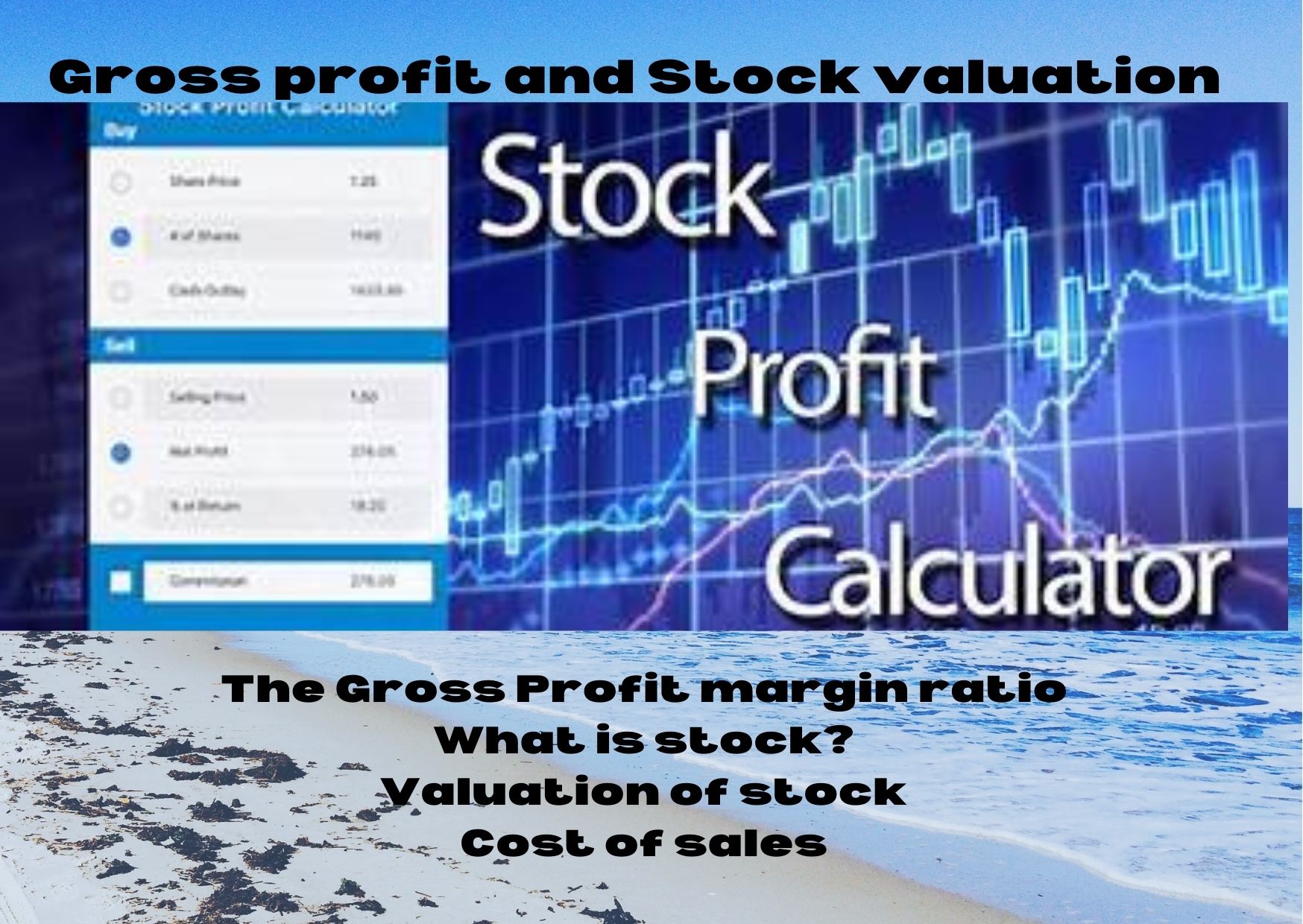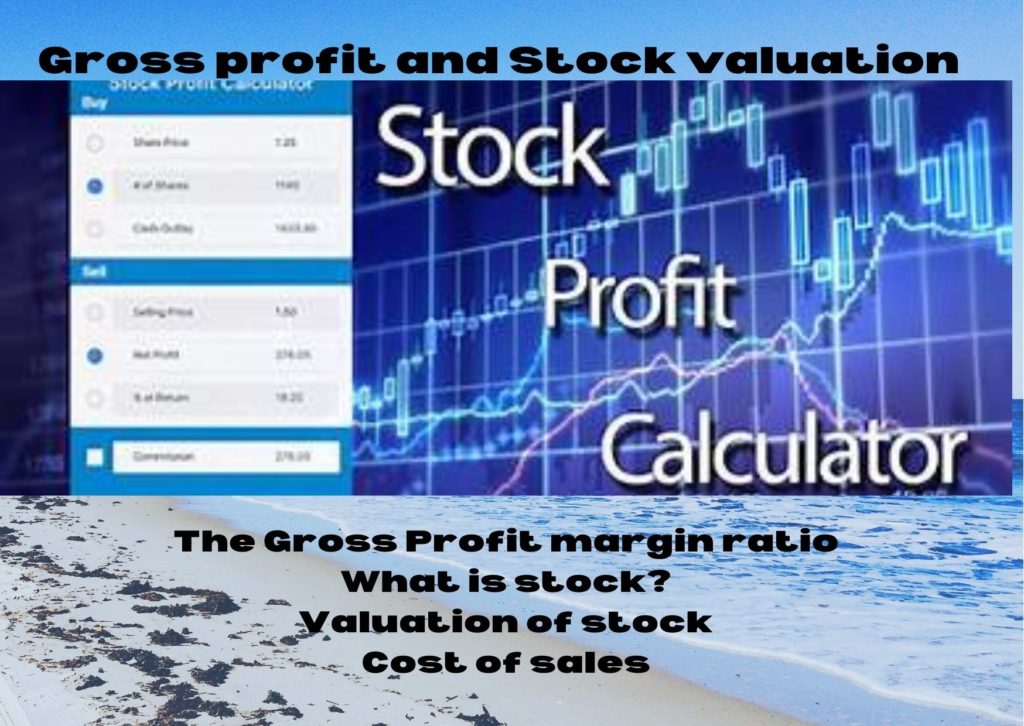*Gross profit and stock valuation
Gross profit is shown in the income statement as a figure after deducting all the associated costs in producing your product or services from the sales that are called the gross profit. In another format, Gross profit= Sales- Cost of goods. After calculating the gross profit, deduct all the general administrative expenses and the tax payable to get the net profit, which you get from the profit and loss account for a specified accounting period. The net profit will be the revenue of your business.
Gross profit is the amount of total revenue minus the cost of goods sold. In calculating the gross profit, they do not consider other expenses like rent, rates, stationary, etc.
Gross Profit = Revenue – Cost of goods sold.
The Gross Profit margin ratio
It is the most critical ratio. Businesses use to assess the relationship between profit and sales.
Gross profit*100/ Sales = Gross profit margin
Use The gross profit ratio to assess a company’s financial health.
What is stock?
In accounting, the term stock means the goods you hold on to hands and sell to the customers; otherwise, it is the inventory. The ownership of the shares of a company is also called stock. Then the list is held for the process of the production for sale. The cost of the stock includes the purchase price and other labor costs, production costs, transportation, and other handling charges. But cannot add the general and administrative expenses cannot be added to the price of the stocks.
Valuation of stock
The assessment of stock leftover is the cost price of the stock (purchase price of the store) or the current market price, whichever the lower. The first stock is a debit balance in the books at the beginning of a financial period. It goes as a debit to the stock accounts at the close of a previous fiscal period. The debit value of the old version is taken as the trial balance figure when they do the final reports for the current period. The two dates of the opening and closing stock should indicate so there is no confusion. The stock amount at the start gets transferred to the trading account at the end of the period.
Stock accounting double entry.
You buy some stocks for,say, $500, which you want to sell later. The double entry will be debit asset account and credit the cash account.
If you return the supplier, debit cash and credit to the stock account. (Asset)
Stock account
| Date | Dr | $ | Date | Cr | $ |
| March 6 | Purchases | 1200 | March 6 | Cash | 1200 |
Returned stock
| Date | Dr | $ | Date | Credit | $ | |
| March 10 | Cash | 400 | March 10 | Stock account | 400 | |
Cost of sales
What is the price of goods sold?
Cost of goods sold= Opening stock + purchases-purchase returns + Direct expenses+ Direct labour- Closing stock.
Opening stock – The stock you have in hand
Purchases: The goods you buy during a specific period.
Direct expenses- Maybe transport expenses, staff wages, Storage
Direct Labour – The wages that you pay the manufacturing labor.
Cost of sales is the cost of the goods sold. It consists of the total purchases plus the first stock less the closing share, giving the figure for the sales price.
The primary purpose of the trading account is to find the g profit or loss for a stated period. The gross profit is the difference between the sales and the cost of goods sold. The formula for the price of sales is as follows.
What are the mistakes that you could make to increase the gross profit?
- The wrong amount was less than the trading expenses debited to the profit and loss account.
- Outstanding expenses are left out and not included.
- When making wrong sales entries
- Purchased and returned goods debited to the supplier and in the closing stock.
- Goods returned by customers are included in the closing stock, and the customer account is not credited.
- If the goods sold but not delivered are included in the closing stock.



